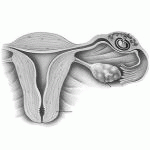Gynaecology
|
24 april 2014 07:39:07 |
| Breastfeeding and lactation research: exploring a tool to measure infant feeding patterns (International Breastfeeding Journal) |
|
Tweet Background:
Infant feeding categories, often referred to as breastfeeding definitions, form the basis to describe infant feeding patterns; especially, breastfeeding duration and degree of breastfeeding exclusivity. Researchers use a variety of algorithms and no validated tool exists to measure feeding patterns for research purposes. The goal of this research project was to develop and test a tool to measure patterns of infant feeding for breastfeeding and lactation research.
Methods:
We used a literature review, survey methods, and statistical analysis to develop and test this health measurement tool. The work was completed in three phases: 1) development of the tool; 2) assessment of content validity with a panel of experts; and 3) testing for inter-rater reliability by comparing the conclusions of 2 independent research assistants (RAs) and by comparing mothers` feeding diaries with the RAs` findings. For the third phase, an a priori analysis determined we needed to recruit 75 participants. Inclusion criteria were women who had given birth to a single healthy newborn, planned to breastfeed and were able to breastfeed freely, were able to read and write in English or French, were willing and able to maintain a weekly feeding diary for 6 weeks and to answer 6 English telephone questionnaires (twice within 24 hrs x 3 times over 6 months. To measure inter-rater reliability, we used intraclass correlation coefficient.
Results:
The final tool, The FeedCat Tool, contains two parts: 1) questions asked to determine what and how the baby was fed and 2) a chart to indicate the feeding category for each time point and recall period. We recruited 75 breastfeeding mothers to measure inter-rater reliability. Inter-rater reliability for classification of feeding categories by the two RAs and for agreement between the RAs` findings at 1 month and mothers` diaries at 4 weeks indicated excellent agreement.
Conclusion:
We produced a feeding categories tool that can be used by researchers to describe the type, amount, and mode of feeding, and we tested the tool for content validity and reliability. Researchers should consider The FeedCat Tool for lactation and research projects requiring data about infant feeding patterns. |
| 86 viewsCategory: Gynaecology |
 A comprehensive representation of the birth-experience: identification and prioritization of birth-specific domains based on a mixed-method design (BMC Pregnancy and Childbirth) A comprehensive representation of the birth-experience: identification and prioritization of birth-specific domains based on a mixed-method design (BMC Pregnancy and Childbirth)Why `down under` is a cut above: a comparison of rates of and reasons for caesarean section in England and Australia (BMC Pregnancy and Childbirth) 
|
| blog comments powered by Disqus |
MyJournals.org
The latest issues of all your favorite science journals on one page
The latest issues of all your favorite science journals on one page



